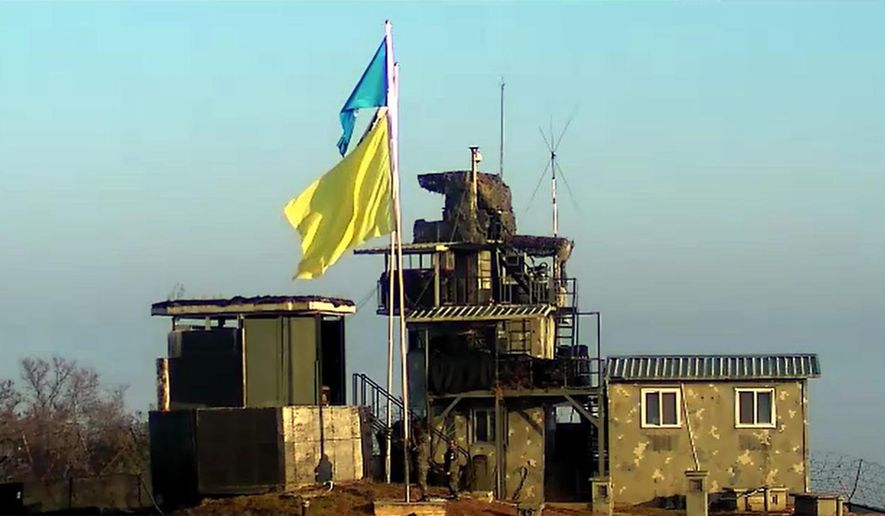SEOUL, South Korea (AP) - The North and South Korean militaries completed withdrawing troops and firearms from 22 front-line guard posts on Saturday as they continue to implement a wide-ranging agreement reached in September to reduce tensions across the world’s most fortified border, a South Korean Defense Ministry official said.
South Korea says the military agreement is an important trust-building step that would help stabilize peace and advance reconciliation between the rivals. But critics say the South risks conceding some of its conventional military strength before North Korea takes any meaningful steps on denuclearization - an anxiety that’s growing as the larger nuclear negotiations between Washington and Pyongyang seemingly drift into a stalemate.
South Korea reportedly has about 60 guard posts - bunker-like concrete structures surrounded with layers of barbed-wire fences and manned by soldiers equipped with machine guns - stretched across the ironically named Demilitarized Zone.
The 248-kilometer (155-mile) border buffer peppered with millions of land mines has been the site of occasional skirmishes between the two forces since the 1950-53 Korean War. The North is believed to have about 160 guard posts within the DMZ.
In the September military agreement, reached on the sidelines of a summit in Pyongyang between North Korean leader Kim Jong Un and South Korean President Moon Jae-in, the Koreas pledged to eventually withdraw all guard posts within the DMZ, but to start by removing 11 from each side as a “preliminary” measure.
The South Korean Defense Ministry official said soldiers on Saturday completed disarming 11 guard posts on the southern side of the DMZ. He said the ministry believes the North has also finished withdrawing personnel and weapons from 11 guard posts on the northern side of the DMZ. He didn’t want to be named, citing office rules.
The Koreas plan to destroy 20 of the structures by the end of November, while symbolically leaving one demilitarized guard post on each side. They plan to jointly verify the results in December.
The Koreas also in the September deal agreed to create buffer zones along their land and sea boundaries and a no-fly zone above the border, which took effect on Nov. 1.
The Koreas and the U.S.-led U.N. Command recently finished removing firearms and troops from a jointly controlled area at the border village of Panmunjom and eventually plan to allow tourists to freely move around there. The Koreas have also been clearing mines from front-line areas and plan to start in April their first-ever joint search for remains of soldiers killed during the Korean War.
While the Korean militaries move ahead with tension-reducing steps, Moon is otherwise running out of goodwill gestures toward North Korea, which is under heavy U.S.-led sanctions over its nuclear weapons program. Unless the sanctions are lifted, it would be impossible for Moon to push ahead with his more ambitious plans for engagement, such as reconnecting railways and roads across the border and normalizing operations at a jointly run factory park.
Pyongyang insists that sanctions should be removed before there is any progress in nuclear negotiations, while Washington says they will remain until the North takes concrete steps toward irreversibly and verifiably relinquishing its weapons.
Analysts say the discord may have caused the last-minute cancellation of a meeting between U.S. Secretary of State Mike Pompeo and his North Korean counterpart, Kim Yong Chol, that had been scheduled for this past Thursday to discuss denuclearization issues and setting up a second summit between Kim Jong Un and President Donald Trump.




Please read our comment policy before commenting.